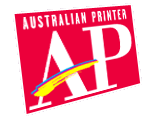Faster than a speeding bulletin
Capable of producing a superhuman 70,000 news pages an hour, The Gold Coast Bulletin’s new print centre went into full production in July. David Catt reports It is $43m well spent. The imposing print centre of The Gold Coast Bulletin at Molendinar in Queensland went on line in July after several years of planning and building and will deliver The Gold Coast Bulletin’s rapidly expanding readership with a higher quality publication in far greater volumes.
The 4000sqm climate-controlled facility comprises of a 1200sqm publishing hall, 560sqm press hall, a plate room, storage facilities and mezzanine level plant room, and dwarfs the publication’s previous incarnation – 300sqm publishing hall and 252sqm press hall. Due to the massive amount of automation throughout the facility, it only takes 42 full-time staff to keep things running smoothly.
At the heart of the new print centre is a nine-tower KBA Comet web offset press, the first of its kind in Australia, capable of printing at 70,000 copies per hour. As far as the newspaper is concerned, that’s 160 pages in one print run, including 128 pages of full colour plus 32 pages of spot colour; or 144 pages of full colour in one run. This is compared to the old 14-unit press, which ran at a maximum 40,000 copies per hour – 16 pages of colour or a maximum 112 pages in one run. This is an approximate 200 per cent capacity increase over what was previously possible, a must considering the paper’s circulation is increasing at six per cent per annum. Provision has also been made to add a tenth printing unit to the Comet. Two jaw folders are utilised to stitch tabloid newspapers and glue A4 magazines in a spine of up to 64 pages.
Keeping the press spic and span are automatic blanket-washing systems from Baldwin Graphic Equipment, which utilise environmentally-friendly cottonseed-based cleaning fluids. With the old press, operators would clean the blankets with hazardous solvents on cleaning rags, a real environmental and OHS liability. Baldwin also supplied the LithoSpray dampening system, which offers estimated paper wastage savings of 50 papers per run as opposed to 1000 under the old system. At all times, press operators are able to monitor the status of the press, performance levels and the flow of information from the prepress department on six touchscreen consoles housed in a specialised control room.
Speaking of the prepress department, The Gold Coast Bulletin has bid farewell to its imagesetters and installed two Agfa :Polaris XTV violet platesetters and :VSL85 plate processors, as well as on-line Barenschee VSAK240 vision punch benders. The :Polaris XTV is a high-speed (200 plates per hour), single-head, violet-laser system that supports standard newspaper plate formats. Plate loading is simplified with a plate trolley that keeps over 1000 single or 500 panorama plates online. Agfa will also supply its :N91V photopolymer plates. Driving the prepress front-end is Agfa’s :Arkitex automated workflow system, designed to handle both internal and external publications, soft proofing, and imposing, as well as ink presets which are communicated to the pressroom.
It takes a fair bit to feed a press this size and keeping it running at maximum capacity, especially as the press is capable of consuming 340km of paper per hour when at full flight. Norske Skog has been charged with supplying the news stock, which is currently around 7500 tonnes per year. The new press means that Norske Skog is now able to deliver the paper in larger rolls, which means fewer reel changes, adding to the centre’s newfound levels of efficiency. With each run, the paper is trucked into the paper store and fitted to the centre’s ten sizeable reel stands.
Flint Ink, with which The Gold Coast Bulletin has had a long and happy relationship, will provide the centre with between four and five tonnes of ink per week. The ink arrives in 1000 litre tanks installed on computer controlled stands, which gives feedback to the operators as to how much ink is being used and at what rate, eliminating the previous trial-and-error approach of estimating. Each stand also holds two tanks of colour ink.
Once the prints have left the press, they are whisked away by an overhead conveyor system from Ferag Australia, featuring 900 metres of conveyor tracks with specialised grippers. The systems deliver the work to the Ferag MultiSertDrums for placement of inserts, to the Ferag MultiDisc winders for storage, or straight on to be automatically trimmed, stacked, bundled and wrapped.
Very few of The Gold Coast Bulletin’s loyal readers would ever be aware of what exactly goes on deep within the bowels of the newest Gold Coast landmark, but with the foresight and the technology driving the newspaper, many more will be able to browse its pages for years to come.
The winning formula
The new printing facility at a glance:
- 4000sqm of floor space – 2850 cubic metres of concrete and 160 tonnes of reinforced steel
- Nine tower KBA Comet web offset press
- Between four and five tonnes of ink per week from Flint Ink
- 7500 tonnes of newsprint per year from Norske Skog
- Two MultiSertDrums, and MultiDisc winders, with RollStream technology from Ferag Australia
- Two Agfa :Polaris XTV violet platesetters and :VSL85 plate processors, :Arkitex automated workflow system, and :N91V photopolymer plates
- Automated cleaning system and LithoSpray dampening system from Baldwin Graphic Equipment






